Hypothesis.
Introduction.
I. Newton’s law, formulated as the law of universal gravitation, does not fully cover the interaction of bodies in nature. In addition to the forces of attraction, there is also the force of repulsion, which is present if the bodies have rotation in relation to each other, and most bodies in nature are such. In addition, if one body is moved in the direction of another body, that other body will be repelled by an additional force, without being released from the mutual attraction.
This theory of gravitational induction is very similar to the theory of electromagnetic induction. Here there is a movement of the body in the gravitational field. To change the potential in the gravitational field, it is necessary to expend energy (force momentum).
In any body located in the gravitational field, tidal phenomena occur due to the difference in the distance of the points of the body from the source of gravity (Fig.1). As an example, the interaction of two bodies with hydrospheres similar to the earth is considered.
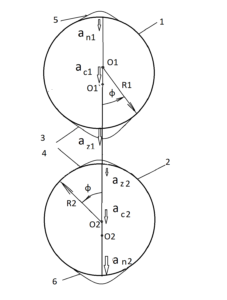
.
Fig. 1 Occurrence of tidal waves in stationary bodies.
When finding the bodies (1) in the gravitational field of the body (2) body surface (1 ) there are tidal waves (3) and (5) characterized by heightened acceleration (3) in the illuminated part and low in the shadow(5).
Tidal waves arise as a result of the action of gravitational waves, reflecting the interference pattern of the superposition of gravitational oscillations from an infinite set of massive bodies. To analyze the interaction, it is enough to consider the tidal waves of two bodies, but in the real picture of the interaction of two bodies, the common center of mass moves in the gravitational fields of many other bodies.
The author suggests that gravitational waves arise as elastic vibrations of the physical vacuum when photons of the relic microwave radiation are repelled by baryonic matter, while the baryonic matter is carried away by the physical vacuum. This happens due to the fact that the speed of rotation of the photon is much higher than the speed of the electron interacting with it, which is in connection with the atoms of matter [6]. Gravitational waves emit all massive bodies, not just those moving in an accelerated and asymmetric manner, as the modern theory of gravity suggests. Accelerated and asymmetric motion only changes the phase of gravitational oscillations. The displacement of photons from the line connecting massive bodies, which occurs in the process of oscillations, is the cause of the mutual attraction of bodies that move in the direction of the resulting low pressure.
When the repulsive force of the body (1) acts on the body (2), which will occur if the body (1) is moved towards the body (2) by an external force, the tidal wave on the shadow side (6) exceeds the tidal wave on the illuminated side (4). It is the gravitational waves that come into play, as there is an asymmetric accelerated motion of the body (1) in the direction of the body (2). Due to the displacement of the tidal wave, the centers of mass of the bodies are shifted relative to the geometric centers. The displacement of the center of mass occurs at the level of atomic structures and bodies of any substance are subject to this phenomenon, but the size of this displacement depends on the plastic and elastic properties of both bodies and, above all, on the composition of their surfaces.
Relevance.
To date, there is no explanation for the change of climatic periods in the history of the Earth. M. Milankovich (1879-1958, g.) put forward the hypothesis that the change of periods occurs due to the peculiarities of the Earth’s orbit relative to the Sun, as well as the peculiarities of the solar orbit [5, p. 23]. Existing observations of the ice temperature in Antarctica clearly indicate the influence of a solar cycle with a period of about 100,000 years, which is superimposed on a cycle with a period of about 26,000 years, which presumably occurs due to the features of the precession movement of the Earth with a precession period. The real reason for the appearance of a cycle with a period of 26,000 years is the influence of the precessional motion of the Earth, which occurs under the influence of tidal waves that occur primarily in the atmosphere and hydrosphere of the Earth when it rotates in the gravitational field of the Sun.
We are most familiar with the phenomenon of tidal forces on the tides at sea. Better understand the impact of tides on the Earth’s orbit allows you to graph temperature of the ice cores of Greenland , is represented in the drawing (Fig. 2). Similar charts are available for Antarctica, but widely they are large scale and less clear [5, c. 28].
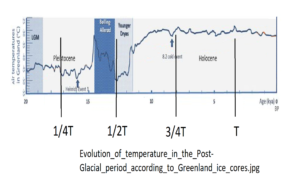
Fig. 2 Graph of temperatures of ice cores in Greenland.
The graph is publicly available on the Wikipedia website at the link shown in the drawing. The characteristic points and the corresponding time points of the precessional rotation of the Earth are plotted by the author. Tidal phenomena on the Earth, combined with its rotation around its axis, push it away from the Sun at the present time and will push it away until the forces of attraction prevail over the forces of repulsion. This happens because the kinetic energy of the Earth’s rotation is converted into the potential energy of its rise in orbit. As the kinetic energy of rotation decreases due to tidal phenomena, the repulsive forces will weaken. In the modern era, the Earth is at a point similar to the one that was a precession cycle ago and is approaching the moment (1/4 T).The tidal wave reduces its lag from the direction of the Sun. The sun has its own rotation around its axis. The rotation period of its outer shell is approximately 25 days.
At the moment of time (1 / 4 T), the repulsive forces of the Earth change to the forces of attraction of the Sun. The tidal wave begins to reduce the lag from the direction of the Sun. This event is accompanied by a nod of the earth’s axis towards the Sun. The Sun begins to twist the Earth, so it becomes unstable in inertial space.
At the moment of time (1 / 2T), an aphelion occurs in the precessional motion of the Earth. The earth turns around an intermediate axis (Dzhanibekov’s somersault). The North Pole turns towards the Sun. After the end of the somersault, the Earth begins to move towards the Sun, while its rotation speed increases due to the twisting of the Sun. The tidal wave on Earth begins to outstrip the direction of the Sun.
At the moment of time (3 / 4 T ), there is a change of the acting forces from attracting to repulsive, which is accompanied by a nod of the earth’s axis from the Sun. The size of the deviation of the Earth’s axis is shown by archaeological excavations in the area of the settlement of Vrable in Southwestern Slovakia [3], conducted by scientists from the University of Kiel (Germany). The foundations of the houses of Neolithic inhabitants, which are usually oriented by the Sun, shifted over 300 years by 30 degrees, and the inhabitants lived there at the time of the efteshoks. It is possible that this event is the cause of the biblical flood.
At a point in time (T = 0) the perihelion of the Earth’s orbit is observed. Some scientists have long assumed that in 1350 BC there was a perihelion of the earth’s orbit of the precessional motion of the Earth. These were years of unprecedented adversity on Earth; crop failures in Egypt, volcanic eruptions on the island of Santorini. This event coincides with another biblical event — the passage of Moses along the bottom of the Red Sea (the Gulf of Aqaba), when «the waters of the sea parted» [4, Chapter 14], at this time Moses crossed the Red Sea on dry land in a place where the depth is now 75 meters. And this fact has already been proven; at this place, the remains of the drowned Egyptian army of pursuers were found. A sharp jump in temperatures during this period shows that such an event was possible due to special overburden phenomena that developed during that period due to the appearance of strong turbulence in the atmosphere and changes in the landscape due to the proximity of the Sun. Run-up phenomena can only explain the variable component of the drop in the water level. The main part of the drop in the water level occurred due to the outflow of inputs to the perihelion from the near-equatorial regions in the direction of the poles due to the repulsive forces of the Sun. The currents arising from the movement of water masses can be described as»trade winds». Both» trade-wind currents «and» trade-wind winds » are presumably of a common nature and change their parameters in accordance with the precessional movement of the Earth. At present, the repulsive forces of the Sun are weakening and water is returning from the circumpolar regions to the near-equatorial regions, and the water level has increased by 50-60 meters. The changing landscape explains why many ancient cities are now located on the sea floor at a depth of up to 60 meters. They were built on the seashore before the perihelion with receding water, and after the perihelion, the landscape began to be flooded by the sea and warming is not the most important factor in the advance of the ocean on land. The onset of water on land is accompanied by an increase in seismicity in areas of flooding and not vice versa. Earthquakes are the result of rising water, not the cause. Dams and only earthquake-resistant dams that block water access to the earthquake zone can save coastal cities from flooding and their construction should not be delayed. The drop in sea level in the equatorial regions will begin only after the ice age. During the Ice Age, there is an outflow of water from the circumpolar regions, which leads to the possibility of a «dry» transition between Eurasia and America in the area of the Bering Strait.
The graph shows that the total precession period is 18,800 years (not 25,675 years as is commonly assumed). This question is debatable, in the sense that during the time period when the poles were facing the Sun, there may have been no ice formation at the poles and the graph data cannot take this into account. This question should be solved by glaciologists, while it is necessary to use such data as is available.
The next event (1/4 T) that the Earth will face will be in 1350 years.
The transformation of the tidal wave in the process of precessional motion of the Earth is shown in (Fig. 3).
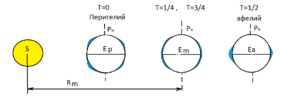
Fig. 3 Transformation of a tidal wave in the process of precessional motion of the Earth.
Goals, tasks.
The task is to calculate the parameters of the earth’s orbit to determine the capabilities of the Earth as a gravitational propulsion system. The aim is to prove the correctness of the hypothesis of M. Milankovich that one of the reasons for the change of climatic periods in the history of the Earth is the change in its orbit relative to the Sun.
In accordance with the law of universal gravitation, the body (2) is mutually attracted to the body (1 ) with a force that is calculated by the formula [1, p. 124]:
F2 = G*M1* M2/R^2 (1)
where:
G is the gravitational constant
M1, M2-the mass of the celestial bodies (1), (2)
R — the distance to the celestial body
since F2 = M2 * a2
Where: a2 is the acceleration of the body (2)
a2 = G*M1/R^2 (2)
Scientific novelty.
By its physical nature, tidal acceleration is the total derivative of acceleration over distance and time.
w = {f ( R , t )}` (3)
Differentiating the expression (2) by distance (for clarity, only the first derivative is taken [2, p. 106 ]), we obtain :
w2 = (da2/dR) = -2G*M1* dR/R^3 (4)
Tidal accelerations depend inversely on the cube of the distance (not on the square), and the interaction of rotating bodies is carried out by the surface masses of the bodies, so the change in the distance between the bodies can be represented as a change in the distance between two rotating masses of tidal waves, whose masses are proportional to the masses of the bodies and with radii of rotation equal to the radii of these bodies. Tidal waves are stationary, but not stationary. The velocities of tidal waves in relation to another body are proportional to the rotational velocities of the interacting bodies. The equivalent substitution allows us to formulate the formula change in the distance (δR) between these bodies, which will be the difference between the projections of the radii of rotation of the bodies on the axis connecting them.
δR = R1* cos (ω1* t+ φ1) — R2cos(ω2* t+ φ2), so
dR/dt = [R1* cos (ω1* t+ φ1) — R2cos(ω2* t+ φ2) ] /dt (5)
where:
ω1, ω2 are the angular velocities of rotation;
φ1, φ2 is the initial rotation angles;
R1 and R2 are the radii of the heavenly bodies;
Expression (5) is a complex function due to the presence of the term d cos (ω* t+ φ)/dt= — ω * sin (ω* t+ φ)
For ease of understanding, only the first derivative is taken, but in practice, derivatives of other orders can also be taken and trigonometric series made from them.
dR/dt= [ — R1*ω1* sin (ω1* t+ φ1) + R2*ω2*sin(ω2* t+ φ2)] (6)
w2 = 2G*M1*[ R1*ω1* sin (ω1* t+ φ1) — R2*ω2*sin(ω2* t+ φ2)]/R^3 (7)
For the interaction of the Earth (e)and the Sun (s), the formula (7) will take the form:
we=2 * G*Ms [ Rs* ωs sin (ω s * t +φs) — Re *ωe sin (ωe * t+ φe)] /R^3 (8)
where:
G = 6.67 10 ^-11 m^3/ kg sec^2 is the gravitational constant;
Ms= 1.98 10 ^ 30 kg -mass of the Sun;
R = 1.49 10^ 11 m -distance to the Sun;
Rs = 1.5 10^ 8 m -radius of the Sun;
Re = 6.37 10^ 6 m -the radius of the Earth;
Ts= 25*60*60*24 sec –the period of rotation of the Sun;
Te = 60*60*24 sec is the period of rotation of the Earth;
ω s= 2π/ Ts is the angular velocity of the Sun’s rotation;
ω e = 2π/ Te is the angular velocity of the Earth’s rotation ;
From the formula (8) it can be seen that for Rs *ωs-Re * ωe =0; Rs *ωs= Vs; Re * we= Ve; where Vs (Ve) are the linear velocities of the bodies ; or going to the rotation periods Rs /Ts = Re/Te, the derivative turns to «0» when the velocities of the Earth and the Sun coincide. This happens when:
Te = Re*Ts/Rs = 6370 10^6 * 25/ 1,5 10^8 = 1,06 days (9)
this period corresponds to the average orbit of the Earth, in which tidal forces do not affect the orbit. According to Kepler’s third law:
Re^3/Te^2 =Re1^3/Te1^2 (10)
Re1 =( Re^ *Te1^2/Te^2 )^ -3 (11)
Re1 =[( 1,49 10^11)^3 * (365 * 1,06)^2/ 365^2]^-3 = 154,9 million km.
It turns out that the Earth in the course of precessional motion moves away from the Sun much further than we thought, having an average orbit of 154.9 million km.
According to the temperatures of the Greenland ice cores, this moment will occur in (t2 = 1350 years) from the present moment . During this time, the orbit of the Earth will rise to (154,9 million km. — 149млн.km. =5.9 million km) with an acceleration (a), having an initial velocity (V = a*t1)
S = a * t1 *t2 + a* t2^2/2 = a * (t1 * t2 + t2^2/2) = 5,9 10^9 m.; (12)
where: t1 is the time interval from the moment of perihelion (a pronounced ridge on the graph) to the present time, which is (about 3350 years);
t2-the time interval from the present time to the moment of the Earth’s axis nod at the change of acting forces (about 1350 years), we
calculate the acceleration with which the Earth moves;
ae = S/(t1 * t2 + t2^2/2) (13)
ae = 5,9 10^9 /(60*60*24*365*)^2 * (3350 * 1350 + 1350^2/2) = 5,9 10^9/ 9,95 10^14 * 5,6 10^6 m/sec^2 = 1,05 10^-12 m/sec^2
Distance from the average orbit during a quarter of the precession period (18800/4 = 4700 years) will make up :
t = 60*60*24*365* 4700 = 1,48 10^11 sec – the time until the upper orbit is passed.
DN= 1,05 10^-12 * (2,2 10 ^ 22)/ 2 = 11,55^9 m = 11.55 million km.
No other force except tidal, it is impossible to explain such fluctuations (+/- 11.55 million km) of earth’s orbit, and the fact that they are, according to climatic periods in Earth’s history: ice age c Somerset Dzhanibekov and flood, as well as nods of the earth’s orbit when changing actors.
The heights of the orbits will be:
Hh = (154.9 + 11.55) = 166.45 million km. — altitude of the upper orbit
Hl = (154.9-11.55) = 143.35 million km. — the height of the lower orbit
For one year (tj) the Earth’s orbit is currently receding from the Sun at:
ΔH1 = a *t1* tj+ atj^2/2 = 1,05 10^ -12 * (60*60*24*365 *3350 ) * (60*60*24*365)+ 1,05 10^ -12 * (60*60*24*365)^2/2 = 1749 10^3 m.= 1749 km.
It is possible to check the obtained value in a different way, knowing that the duration of a second over 100 years increases by 1.78 msec. According to Kepler’s law;
Re1 =( Re3 *Te12/Te2 )^ -3 = (149^3 * 1,00178^2)^-3 = 149.1767 million km.
In one year, the distance will be 176700 km./100 years =1767 km. / year., which is within the accuracy range.
The values are comparable and it follows that the Earth is really moving away from the Sun at a speed of 1767 km/ year.
At present, we simply do not notice this removal, but in thousands of years the Earth will be very far from the Sun and life on it will be less comfortable.
We calculate the tidal acceleration by the formula (8):
we = 2 * 6,67 10^ -11 * 1,98 10 ^30 6,28 * 1,5 10 ^8 6,28 * 6,37 10^6/(1,49 10 ^11)^3 60*60*24 * 25 60*60*24 = 2,8 10^ -12 m/sec^2
The difference in the value of the tidal acceleration calculated by the formula (8) (2.8 10^ -12 m/sec^2) and the acceleration with which the Earth moves, calculated by the formula (13) (1.05 10^-12 m/sec^2) is explained by the fact that the first derivative must have its own gravitational constant, which is characteristic of the interaction of the Earth with the Sun:
G1 = G*ae/ we
G1 = 6,67 10^-11 * 1,05 10^-12/ 2,8 10^12 =2,5 10^-11 m^3 /kg.sec.
It is much more convenient to use the proposed «tidal wave coefficient» (kw):
kw = ae/ we ;
G1 = cpv * G ;
for the interaction of the Earth and the Sun:
to the pv =1,05 10^-12/ 2,8 10^12 = 0,375
At present, there is very little information about the solar orbit. Data is only available about the angular speed (ωs), the period of orbit (TS) and the inclination of the rotation axis to the orbital plane (ι, s).
Let’s try to calculate the parameters of the Earth’s orbit taking into account the influence of the solar orbit:
The maximum angular velocity of the Earth’s rotation will be:
ω max = ωe + ωs =1 + 0.04 = 1.04 rpm;
we is the angular velocity of the Earth’s rotation ( 1 rpm / day).);
ωs is the angular velocity of the Sun’s rotation ( 1/25 rpm / day).);
The minimum angular velocity of the Earth’s rotation will be:
ω min = ωz cos i e + ωc cos i s= 1 * 0,9354 + 0,04 * 0,992 = 0,937 volume/day.
ι e — inclination of the rotation axis to the orbital plane of Earth (23°).
s ι is the inclination of the rotation axis to the plane of the orbit of the Sun (8 deg.);
According to Kepler’s third law:
R^3/T^2 = R max^3/ T max^2 =R min^3/ T min^2;
T = 2π/ω
R max = {R w^3 * T max^2/ T w^2}-3 ={(149^3 * 1,04^2) /1^2}-3 = 152,9 million km.
R min = {R z^3 * T min^2/ T z^2}-3 = { (149^3 * 0,937 ^2)/1^2}-3 = 142,7 million km.
DNs = 152,9-142.7/2 = 5.1 million km. — distance from the average orbit.
The uppermost orbit of the Earth is 166.55 + 5.1 = 171.55 million km.
The lowest orbit of the Earth is 143.25 — 5.1 = 138.25 million km.
The ratio of radiant energy (Emax, Emin) received at different orbits (Rmin, Rmax) is inversely proportional to the square of the distances to the Sun;
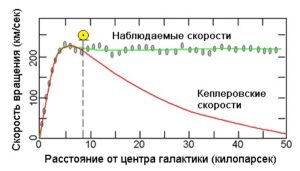
Fig. 4 Image from the website (www:astronomy.ohio-state.edu). The position of the Sun is plotted by the author of this article.
Stars are attracted to the Sagittarius-A black hole only through the jumper. In accordance with the changing speed of the stars as a result of fluctuations, there are also fluctuations in the azimuthal position of the bridge. At a higher speed, it spins clockwise, and at a lower speed, it moves in the opposite direction. The approximate estimate of the amplitude of the speed fluctuations is 20-30 km / sec. with an oscillation wavelength of about 8 kiloparsecs. The position of the Sun on the chart is plotted by the author. From the analysis of the graph, it can be understood that the speed of the Sun will increase and most likely the elongation of the Earth’s orbit will increase. The degree of influence of this component has yet to be assessed, but it is very significant, as can be seen in the temperature charts of the ice cores of Antarctica. It is assumed that this component causes the main harmonic of the oscillations.
Conclusion, the results of
The gravitational constant reflects the features of a celestial body in the excitation of a tidal wave. Its formation is influenced by both interacting bodies. At the Earth it is high, and at the Moon it is several orders of magnitude lower (2.06 10^-15 m^3/kg. sec.). The moon does not have such a tidal wave due to the lack of an atmosphere and hydrosphere, and it does not have a satellite. The» tidal wave coefficient » of the Earth also depends on human activity; the creation of reservoirs, pipelines, mining, etc..
The tidal wave has a standing character for interaction with external bodies, but a traveling character relative to the surface of the body itself and has the property of converting the kinetic energy of rotation into the potential energy of the gravitational field, which means that it is possible to move in the gravitational field of another body by changing the magnitude and direction of the tidal wave,
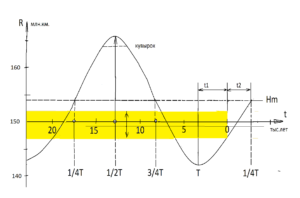
Fig. 5. The change in the distance from the Earth to the Sun as a result of precessional motion.
Figure 5 shows a graph illustrating the change in the distance from the Earth to the Sun during the precessional motion of the Earth (without taking into account the influence of the features of the solar orbit). Yellow color highlights the current idea of this movement as an annual (nutational) oscillation of the earth’s orbit. There is currently no idea of the orbit oscillation as a result of the precession of the Earth’s axis. Modern science is not able to explain the change of climatic periods in the history of the Earth. This hypothesis confirms the hypothesis of the change of climatic cycles in the history of the Earth, expressed by M. Milankovich noted that one of the reasons for the change of climatic periods is the peculiarities of the Earth’s orbit relative to the Sun and the peculiarities of the solar orbit.
Bibliographic list:
1. E. I. Butikov, A. S. Kondratiev Physics. Book 1. Mechanics. — M.: Nauka, 1994. — 138 p.;
2. N. S. Piskunov Differential and integral calculus for higher education institutions. vol. 1; 13th edition; Nauka; 1985. -560 p.;
3. Sergey Vasiliev, Archaeologists explained the turn of Neolithic buildings counterclockwise, Naked-science.ru No. 52, 2020 [Electronic resource ], Access mode URL: https://naked-science.ru/article/anthropology/arheologi-obyasnili-povorot-neoliticheskih-zdanij-protiv-chasovoj-strelki. Html, (Accessed 23.04.2020);
4. The Bible, the Synodal Translation, the Old Testament, the Book of Exodus, ch. 14 ,[Electronic resource ], Access mode URL: http://planeta.one/bible/v.htm. (Accessed 20.04.2020);
5. Yakov Golovnya, Stability of the Earth’s climate, climate history, methods of paleoclimatology, Dochlayer.ru, [Electronic resource ], Access mode URL:, https://docplayer.ru/113894621-9-istoriya-klimata-metody-paleoklimatologii-ustoychivost-klimata-zemli.html , (Accessed 23.04.2020);
6. A.V. Nechaev, Interaction of rotating bodies, SCI-ARTICLE.RU No. 53 (July) 2020 [Electronic resource ], URL access mode:http://sci-article.ru/stat.php?i=1601963571, (Accessed 27.04.2020);
7. Igor Sokalsky, Dark matter, Chemistry and life No. 11, 2006 [Electronic resource] Access mode URL: https://textarchive.ru/c-2347804.html. Graph, Calculated and measured speed of rotation of stars as a function of the distance to the center of the galaxy (image from the website www.astronomy.ohio-state.edu), (Accessed 23.04.2020).
- Quarks and tidal waves (hypothesis).
- The gravitational nature of electricity and magnetism (hypothesis).
- Reasoning about the structure of a black hole (hypothesis)
- Interaction of the physical vacuum with baryonic matter and radiation emissions (hypothesis)
- Interaction of rotating bodies (hypothesis).
